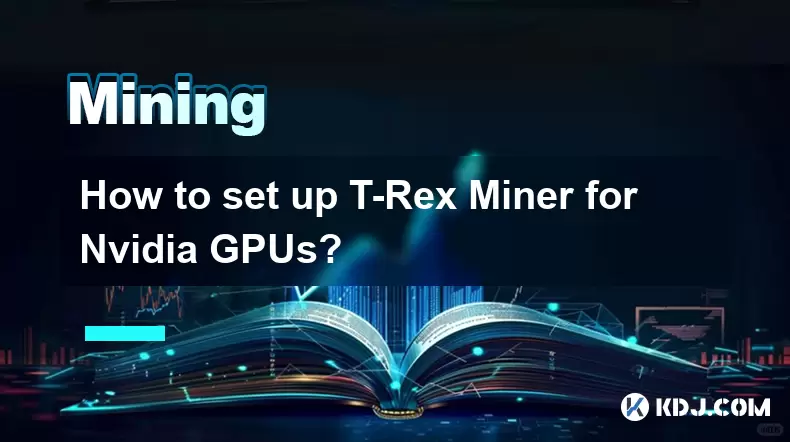-
 Bitcoin
Bitcoin $117600
0.25% -
 Ethereum
Ethereum $4424
0.10% -
 XRP
XRP $3.101
0.50% -
 Tether USDt
Tether USDt $1.001
-0.01% -
 BNB
BNB $836.2
1.26% -
 Solana
Solana $188.8
2.11% -
 USDC
USDC $1.000
0.01% -
 Dogecoin
Dogecoin $0.2301
0.57% -
 TRON
TRON $0.3485
-1.00% -
 Cardano
Cardano $0.9209
-1.34% -
 Hyperliquid
Hyperliquid $46.72
-1.19% -
 Chainlink
Chainlink $22.62
4.84% -
 Stellar
Stellar $0.4275
-0.38% -
 Sui
Sui $3.761
1.91% -
 Bitcoin Cash
Bitcoin Cash $586.7
-0.25% -
 Ethena USDe
Ethena USDe $1.001
0.01% -
 Hedera
Hedera $0.2510
2.06% -
 Avalanche
Avalanche $24.21
2.22% -
 Litecoin
Litecoin $119.7
1.07% -
 Toncoin
Toncoin $3.450
1.06% -
 UNUS SED LEO
UNUS SED LEO $9.411
-0.93% -
 Shiba Inu
Shiba Inu $0.00001298
1.20% -
 Uniswap
Uniswap $10.98
3.25% -
 Polkadot
Polkadot $3.961
2.16% -
 Dai
Dai $1.000
0.00% -
 Bitget Token
Bitget Token $4.642
0.95% -
 Cronos
Cronos $0.1514
0.57% -
 Ethena
Ethena $0.7290
3.78% -
 Monero
Monero $254.1
7.69% -
 Pepe
Pepe $0.00001102
2.47%
How to calculate the payback period of a mining machine? What factors affect payback?
The payback period for a mining machine is calculated by dividing the initial cost by the net daily revenue, considering factors like hash rate and electricity costs.
May 09, 2025 at 01:35 pm

Understanding the payback period of a mining machine is crucial for anyone involved in cryptocurrency mining. The payback period is the time it takes for the revenue generated from mining to equal the initial investment in the mining hardware. This calculation helps miners determine the profitability and viability of their mining operations. In this article, we will delve into the detailed process of calculating the payback period and explore the various factors that can affect it.
Calculating the Payback Period
To calculate the payback period of a mining machine, you need to consider several key components: the initial cost of the mining hardware, the daily revenue generated from mining, and the operational costs. Here's how you can perform this calculation:
Determine the Initial Cost: This includes the purchase price of the mining machine and any additional hardware or setup costs. For example, if you buy a mining rig for $2,000, this is your initial investment.
Calculate Daily Revenue: To find the daily revenue, you need to know the hash rate of your mining machine, the current block reward, and the mining difficulty. Use a mining calculator to determine the daily earnings based on these factors. Suppose your mining machine generates $10 per day.
Account for Operational Costs: These include electricity costs, cooling expenses, and any other ongoing costs associated with running the mining operation. If your daily operational costs are $3, then your net daily revenue is $10 - $3 = $7.
Calculate the Payback Period: Divide the initial cost by the net daily revenue to find the payback period. Using the figures from our example, the payback period would be $2,000 / $7 = 285.71 days, or approximately 9.5 months.
Factors Affecting the Payback Period
Several factors can influence the payback period of a mining machine. Understanding these factors is essential for making informed decisions about your mining operations.
Hash Rate of the Mining Machine
The hash rate of a mining machine is a critical determinant of its revenue-generating potential. A higher hash rate means more computational power and, consequently, a higher chance of earning rewards. If a mining machine has a higher hash rate, it will generate more revenue, which can shorten the payback period. For instance, a machine with a hash rate of 100 TH/s will likely have a shorter payback period than one with a hash rate of 50 TH/s, assuming all other factors remain constant.
Cryptocurrency Price Volatility
The price of the cryptocurrency you are mining directly affects your revenue. If the price of the cryptocurrency increases, your daily earnings will also increase, potentially reducing the payback period. Conversely, a drop in the cryptocurrency price will extend the payback period. For example, if you are mining Bitcoin and its price rises from $30,000 to $40,000, your daily revenue will increase, leading to a shorter payback period.
Mining Difficulty
Mining difficulty is a measure of how hard it is to find a new block in the blockchain. As more miners join the network, the difficulty increases, which can reduce the revenue per hash. If the mining difficulty increases, the daily revenue from your mining machine may decrease, lengthening the payback period. For example, if the mining difficulty increases by 10%, your daily revenue might drop from $10 to $9, extending the payback period.
Electricity Costs
Electricity costs are a significant operational expense for miners. The cost of electricity can vary widely depending on your location and the efficiency of your mining hardware. Higher electricity costs will reduce your net daily revenue, thereby extending the payback period. For instance, if your electricity cost is $0.10 per kWh and your mining machine consumes 2,000 watts, your daily electricity cost would be $4.80. This would reduce your net daily revenue from $7 to $5.20, lengthening the payback period.
Maintenance and Cooling Expenses
Maintenance and cooling expenses are other operational costs that can affect the payback period. Mining machines generate a lot of heat and require regular maintenance to function efficiently. Higher maintenance and cooling costs will reduce your net daily revenue, thus extending the payback period. For example, if your monthly maintenance and cooling costs are $50, your daily operational costs would increase by $1.67, reducing your net daily revenue and extending the payback period.
Block Reward Changes
Block reward changes can also impact the payback period. If the block reward for the cryptocurrency you are mining decreases, your daily revenue will decrease, extending the payback period. For example, if the block reward for Bitcoin halves from 6.25 BTC to 3.125 BTC, your daily revenue will be cut in half, significantly extending the payback period.
Practical Example of Payback Period Calculation
Let's walk through a practical example to illustrate how to calculate the payback period of a mining machine. Suppose you purchase a mining rig for $3,000 with a hash rate of 120 TH/s. You are mining Bitcoin, and the current price is $35,000 per BTC. The block reward is 6.25 BTC, and the mining difficulty is at a certain level where your daily revenue is $12. Your daily electricity cost is $4, and your monthly maintenance and cooling costs are $60, which translates to a daily cost of $2.
- Initial Cost: $3,000
- Daily Revenue: $12
- Daily Operational Costs: $4 (electricity) + $2 (maintenance and cooling) = $6
- Net Daily Revenue: $12 - $6 = $6
- Payback Period: $3,000 / $6 = 500 days, or approximately 16.7 months
In this example, the payback period for the mining machine is about 16.7 months, assuming all variables remain constant.
Adjusting for Variables
It's important to understand that the variables used in the payback period calculation can change over time. Miners should regularly recalculate the payback period to account for changes in cryptocurrency prices, mining difficulty, and operational costs.
Monitor Cryptocurrency Prices: Keep an eye on the price of the cryptocurrency you are mining. If the price increases, your daily revenue will increase, potentially shortening the payback period.
Track Mining Difficulty: Regularly check the mining difficulty of the cryptocurrency network. An increase in difficulty will reduce your daily revenue, extending the payback period.
Review Operational Costs: Monitor your electricity, maintenance, and cooling costs. Any changes in these costs will affect your net daily revenue and, consequently, the payback period.
By staying vigilant and adjusting your calculations accordingly, you can make more accurate predictions about the payback period of your mining machine.
Frequently Asked Questions
Q: Can the payback period of a mining machine ever be negative?
A: No, the payback period cannot be negative. It represents the time it takes for the revenue to cover the initial investment. If the revenue never covers the initial cost, the payback period is considered infinite.
Q: How often should I recalculate the payback period of my mining machine?
A: It is advisable to recalculate the payback period at least monthly or whenever there are significant changes in cryptocurrency prices, mining difficulty, or operational costs.
Q: Can I reduce the payback period by joining a mining pool?
A: Joining a mining pool can potentially increase your daily revenue by allowing you to share the rewards more frequently. However, the impact on the payback period will depend on the pool's fees and the overall efficiency of the pool compared to solo mining.
Q: Are there any tax implications to consider when calculating the payback period?
A: Yes, tax implications can affect the net revenue from mining. Depending on your jurisdiction, you may need to account for taxes on your mining income, which can extend the payback period. It's important to consult with a tax professional to understand the specific implications for your situation.
Disclaimer:info@kdj.com
The information provided is not trading advice. kdj.com does not assume any responsibility for any investments made based on the information provided in this article. Cryptocurrencies are highly volatile and it is highly recommended that you invest with caution after thorough research!
If you believe that the content used on this website infringes your copyright, please contact us immediately (info@kdj.com) and we will delete it promptly.
- Kazakhstan's Crypto Leap: Bitcoin ETF and Central Asia's Digital Finance Future
- 2025-08-13 12:45:19
- BlockDAG Presale Blazes Past $371M: Fundraising Frenzy Fuels Crypto Sensation
- 2025-08-13 13:05:21
- Meme Coins: Chasing the 2025 Surge – Which Will Moonshot?
- 2025-08-13 10:25:23
- Bitcoin's Wild Ride: Rally, Pullback, and What's Next
- 2025-08-13 10:25:23
- Bitcoin, Bitmax, and Institutional Demand: A New Era of Crypto Investment
- 2025-08-13 10:45:12
- Solana, ROAM, and Airdrops: What's the Buzz in 2025?
- 2025-08-13 11:35:13
Related knowledge

How to configure Phoenix Miner for AMD GPUs?
Aug 11,2025 at 03:21am
Understanding Phoenix Miner and Its Compatibility with AMD GPUsPhoenix Miner is a lightweight, high-performance Ethereum mining software designed for ...

How to set up T-Rex Miner for Nvidia GPUs?
Aug 10,2025 at 12:07am
Understanding T-Rex Miner and Its Compatibility with Nvidia GPUsT-Rex Miner is a high-performance mining software designed specifically for Nvidia GPU...

What is "proof-of-work" and how does it relate to mining?
Aug 07,2025 at 02:03pm
Understanding the Concept of Proof-of-WorkProof-of-work (PoW) is a consensus mechanism used in blockchain networks to validate transactions and secure...

How to choose a crypto wallet for your mined coins?
Aug 13,2025 at 11:36am
Understanding the Types of Crypto Wallets for Mined CoinsWhen selecting a crypto wallet for your mined coins, the first step is to understand the diff...

What are the differences between mining on Windows vs. Linux?
Aug 06,2025 at 11:29pm
Overview of Cryptocurrency Mining PlatformsCryptocurrency mining involves using computational power to solve complex cryptographic puzzles and validat...

How to use an old computer for cryptocurrency mining?
Aug 07,2025 at 12:42pm
Understanding the Feasibility of Using an Old Computer for MiningUsing an old computer for cryptocurrency mining may seem outdated, but it is still te...

How to configure Phoenix Miner for AMD GPUs?
Aug 11,2025 at 03:21am
Understanding Phoenix Miner and Its Compatibility with AMD GPUsPhoenix Miner is a lightweight, high-performance Ethereum mining software designed for ...

How to set up T-Rex Miner for Nvidia GPUs?
Aug 10,2025 at 12:07am
Understanding T-Rex Miner and Its Compatibility with Nvidia GPUsT-Rex Miner is a high-performance mining software designed specifically for Nvidia GPU...

What is "proof-of-work" and how does it relate to mining?
Aug 07,2025 at 02:03pm
Understanding the Concept of Proof-of-WorkProof-of-work (PoW) is a consensus mechanism used in blockchain networks to validate transactions and secure...

How to choose a crypto wallet for your mined coins?
Aug 13,2025 at 11:36am
Understanding the Types of Crypto Wallets for Mined CoinsWhen selecting a crypto wallet for your mined coins, the first step is to understand the diff...

What are the differences between mining on Windows vs. Linux?
Aug 06,2025 at 11:29pm
Overview of Cryptocurrency Mining PlatformsCryptocurrency mining involves using computational power to solve complex cryptographic puzzles and validat...

How to use an old computer for cryptocurrency mining?
Aug 07,2025 at 12:42pm
Understanding the Feasibility of Using an Old Computer for MiningUsing an old computer for cryptocurrency mining may seem outdated, but it is still te...
See all articles

























































































